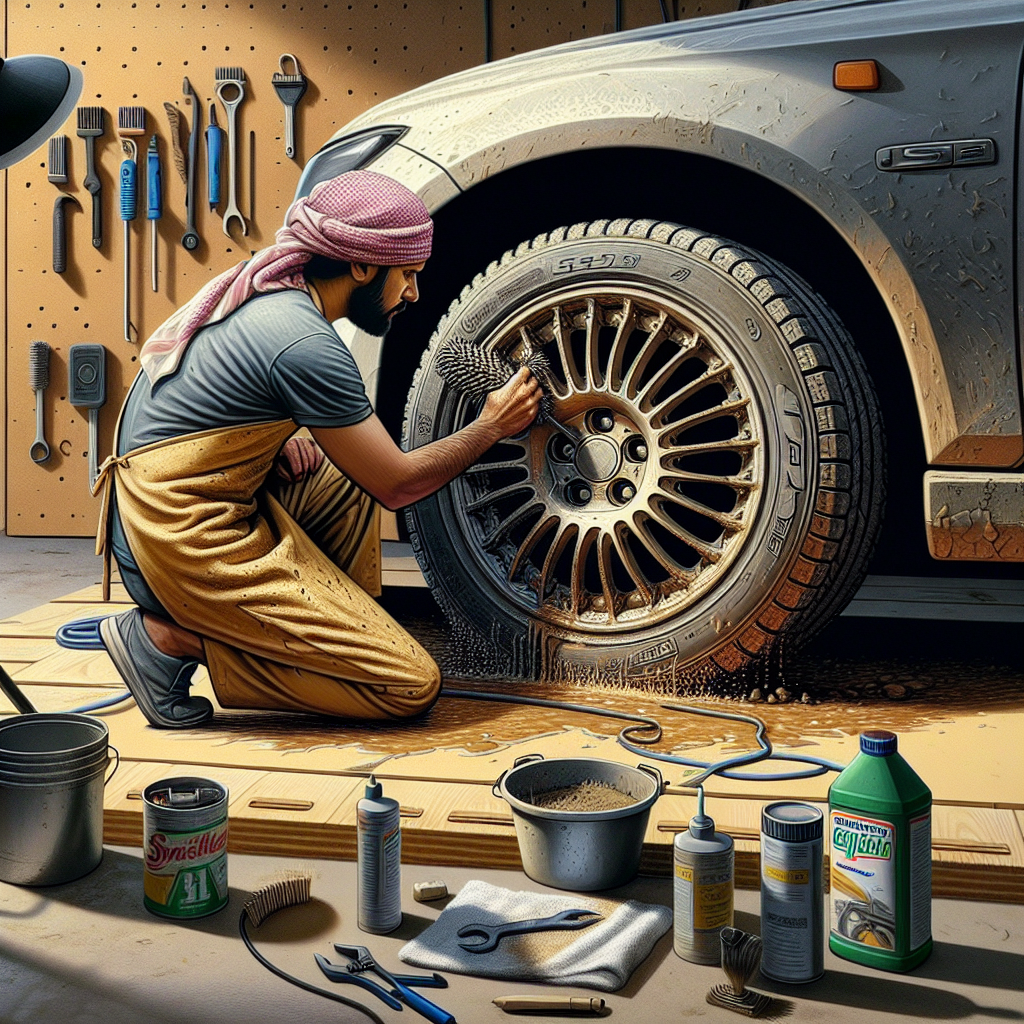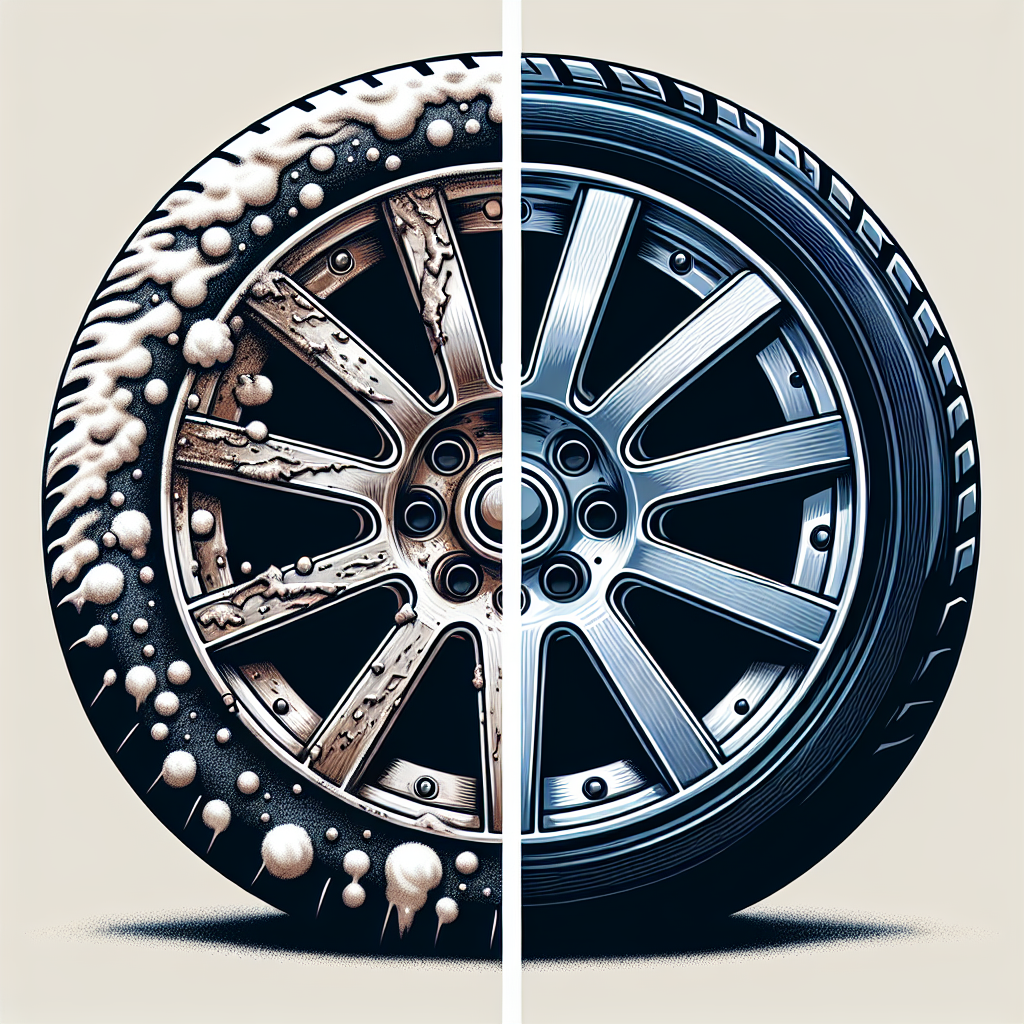Imagine you’ve just finished a long and satisfying road trip, but now your car’s wheels are covered in dirt and grime. Before you rush to give them a good scrub, it’s essential to understand the potential risks of aggressive wheel cleaning. While it may seem harmless to vigorously clean your wheels, excessive scrubbing, harsh chemicals, or using the wrong tools can actually cause more harm than good. In this article, we will explore the potential risks associated with aggressive wheel cleaning and provide tips on how to effectively clean your wheels without causing any damage. So, before you reach for that brush, let’s dive into the world of wheel cleaning to ensure you maintain not only a sparkling set of wheels but also the health of your vehicle.

Potential damage to the wheels
When it comes to aggressive wheel cleaning, there are several potential risks that you should be aware of. One of the most common risks is the occurrence of scratches and scuffs on your wheels. Using abrasive tools or harsh cleaning agents can easily damage the surface of your wheels, leaving them unsightly and susceptible to further deterioration.
Another potential risk is corrosion and pitting. Aggressive cleaning methods can remove the protective coating on your wheels, exposing them to moisture and other corrosive elements. Over time, this can lead to the formation of rust and pitting, compromising the structural integrity of your wheels.
Additionally, aggressive wheel cleaning can cause damage to the wheel finish. The paint or coating on your wheels can be easily stripped away by abrasive cleaning agents or improper cleaning techniques. This not only affects their appearance but also reduces their overall lifespan.
Risks to the tires
Aggressive wheel cleaning can also pose risks to your tires. One of the main risks is tire damage and punctures. Scrubbing too vigorously or using sharp cleaning tools can cause tears or cuts in the tire surface, leading to air leaks or even flat tires. This can be both inconvenient and potentially dangerous, especially if it occurs while driving.
In addition to physical damage, aggressive cleaning methods can contribute to the degradation of tire material. Harsh chemicals or abrasive cleaners can break down the rubber compounds in your tires, making them more prone to cracking and dry rot. This compromises their performance and lifespan, ultimately requiring you to replace them sooner than expected.
Potential harm to the vehicle
It’s not just the wheels and tires that are at risk when it comes to aggressive wheel cleaning. Your vehicle as a whole can suffer from the consequences as well. For instance, aggressive cleaning can damage brake components. Excessive use of water, especially with high pressure, can infiltrate the braking system and cause corrosion or even failure. This puts you and your passengers at risk, as compromised brakes can lead to accidents.
Furthermore, an aggressive cleaning approach can weaken the suspension system. The harsh impact of excessive scrubbing or the use of sharp tools can damage the suspension components, resulting in reduced stability and compromised ride quality. This can lead to discomfort while driving, decreased control, and potentially costly repairs.
Chemical hazards
Beyond the potential damage to your vehicle, aggressive wheel cleaning can also pose risks to your health and the environment. One of the hazards is skin irritation and allergies. Harsh cleaning agents or chemicals can cause skin irritation, especially if you have sensitive skin or if prolonged contact occurs. Allergic reactions may also occur, manifesting as redness, itching, or skin rashes.
Inhalation of toxic fumes is another risk associated with aggressive wheel cleaning. Many cleaning products contain chemicals that release harmful fumes, such as solvents or acids. Breathing in these fumes can lead to respiratory issues, including coughing, chest tightness, and even damage to the lungs. It’s important to use cleaning agents in well-ventilated areas or consider using safer, environmentally friendly alternatives.
Additionally, aggressive wheel cleaning can have negative environmental impacts. The chemicals used in harsh cleaning agents can contaminate water sources if not properly disposed of. This can harm aquatic life and pollute the environment. It’s crucial to be mindful of the products you are using and their potential impact on the ecosystem.

Ineffective cleaning
Ironically, aggressive wheel cleaning methods can sometimes result in ineffective cleaning. One of the common issues is the failure to remove stubborn dirt and grime. Despite the effort put into aggressive cleaning, some dirt particles can become deeply embedded in the crevices of your wheels. This not only diminishes the appearance of your wheels but can also contribute to further corrosion and deterioration over time.
Another issue with aggressive cleaning is the possibility of uneven or patchy cleaning results. Overzealous scrubbing or the use of inappropriate cleaning tools can result in unevenly cleaned areas on your wheels. This can be particularly noticeable on painted or coated wheels, where the difference in cleanliness can be stark. It’s important to strike the right balance between effective cleaning and gentle treatment to achieve uniformly clean results.
Time-consuming process
Aggressive wheel cleaning can often be a time-consuming process. The labor-intensive nature of aggressive cleaning methods can make the task feel daunting and exhausting. Scrubbing vigorously or using intricate tools to remove dirt can take up a significant amount of time and energy, making it a less desirable task for many.
Furthermore, aggressive cleaning might require additional equipment or tools. Investing in specialized cleaning tools or devices, such as pressure washers or abrasive brushes, can add extra cost and complexity to the cleaning process. This can be inconvenient, especially if you only clean your wheels infrequently or if you prefer a simpler approach to maintenance.

Inconsistent appearance
Another downside of aggressive wheel cleaning is the potential for an inconsistent appearance. Due to the aggressive nature of the cleaning process, it’s not uncommon to end up with mismatched clean and dirty areas on your wheels. This can be especially noticeable on wheels with intricate designs or patterns, where pockets of dirt can be difficult to reach with aggressive cleaning techniques. The result is an unappealing contrast between clean and dirty areas, which can detract from the overall aesthetics of your vehicle.
Moreover, aggressive cleaning can leave behind obvious signs of aggressive cleaning methods. Excessive scrubbing or the use of abrasive tools can result in visible scratches or marks on your wheels. These imperfections can be permanent and significantly diminish the visual appeal of your wheels. Achieving a clean result without causing noticeable damage requires a balance between effective cleaning and gentle treatment.
Lack of protective coating
Aggressive wheel cleaning can reduce the effectiveness of any protective coating on your wheels. Many wheels come with a clear coat or protective layer to enhance their appearance and provide a barrier against dirt and damage. However, harsh cleaning agents or abrasive cleaning tools can strip away this protective coating, leaving your wheels vulnerable to dirt accumulation and further deterioration.
Furthermore, without a protective coating, your wheels will require more frequent cleaning. The absence of a barrier makes it easier for dirt, grime, and brake dust to adhere to the surface of your wheels. This means you’ll need to invest more time and effort into maintenance to keep your wheels looking clean, which can be tedious and time-consuming.

Risk of personal injury
Aggressive wheel cleaning can present physical risks to your personal safety. Wet surfaces from the cleaning process can become slippery, increasing the likelihood of slips and falls. This can result in injuries, ranging from minor bruises to more severe fractures. It’s important to exercise caution by using non-slip mats or wearing appropriate footwear to minimize the risk of accidents.
Additionally, aggressive cleaning techniques can lead to flying debris and splashing chemicals. The forceful scrubbing or use of pressure washers can dislodge dirt and send it flying in different directions. Chemicals used in cleaning agents can also splash onto your skin or eyes, causing irritation or injury. Wearing protective gloves, goggles, and appropriate clothing can help prevent such accidents and protect yourself from harm.
Cost implications
Lastly, aggressive wheel cleaning can have cost implications. If you opt for aggressive cleaning methods without taking necessary precautions, you may end up damaging your wheels or vehicle components, resulting in costly repairs or replacements. For instance, damaging brake components or the suspension system can lead to significant expenses to restore their functionality.
In addition, the higher maintenance expenses associated with aggressive cleaning should be considered. The need for frequent cleaning, potential need for specialized tools or cleaning agents, and the possibility of more frequent wheel or tire replacements can all contribute to higher ongoing maintenance costs for your vehicle. It’s important to weigh the risks and benefits before choosing your cleaning approach.
In conclusion, while it may be tempting to use aggressive cleaning methods to ensure gleaming wheels, it’s essential to be aware of the potential risks involved. Scratches, corrosion, and damage to the wheel finish can all result from aggressive cleaning. Furthermore, your tires are at risk of damage, punctures, and degradation of material. Aggressive cleaning can also harm your vehicle, weaken the suspension system, or damage brake components. Chemical hazards, ineffective cleaning, and personal injury are additional risks to consider. Aggressive cleaning may also be time-consuming, result in inconsistent appearance, lack of protective coating, and higher maintenance costs. To maintain your wheels and ensure their longevity, it’s best to find a balance between effective cleaning and gentle treatment.


